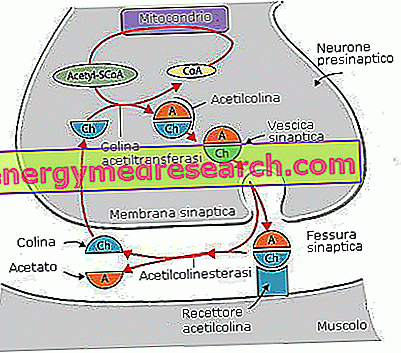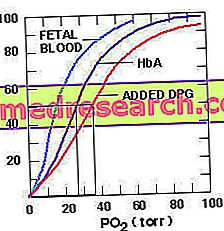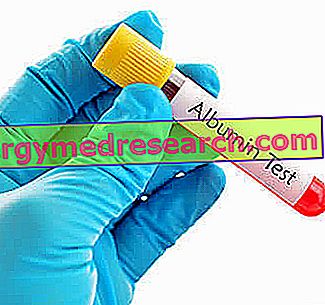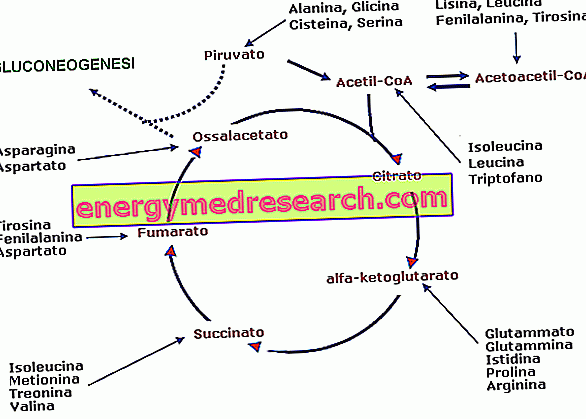Muscle catabolism refers to the significant and objective and measurable loss of contractile fibrocells (or their section). Like all tissues, even the muscular tissue is subject to periodic turnover. The building blocks are dismantled (catabolism) and systematically replaced (anabolism). This procedure is driven by hormonal fluxes and, under physiological conditions (absence of pathologies, eututrition, no pharmacological interference), occurs completely
Category physiology
Bile acids are detergent substances, that is, capable of dispersing water insoluble lipids in aqueous solution. For this reason bile acids play a leading role in the processes of digestion and absorption of lipids. Bile acids are produced by the liver from cholesterol and - together with their conjugates and their salts - are the main constituents of bile
Generality The acetabulum , or acetabulum , is the particular lateral hollow of the iliac bone, used to house the head of the femur and form, with the latter, the hip. Resulting from the contribution of ilium, ischium and pubis - the three bony parts that form the iliac bone - the acetabulum is a rather complex skeletal region, in which the anatomists identify some fundamental portions, known as: acetabular lip, lunate side of the acetabulum, acetabular notch and acetabular fossa
Acetylcholine is a neurotransmitter, a substance produced by our body to transfer nerve impulses to multiple points in the central and peripheral nervous system. The neurons that secrete acetylcholine are called cholinergics; analogous speech for its receptors, which are distinguished in nicotinic and muscarinic receptors
The 2, 3 diphosphoglycerate (2, 3 DPG) is a compound derived from an intermediate product of glycolysis; it concentrates particularly on the erythrocyte level, since the red blood cells - being devoid of mitochondria - exploit the anaerobic lactate metabolism (homolactical fermentation of glucose) to obtain energy
Adipocytes is the term with which scholars identify the cells of adipose tissue, nowadays better known as adipose organ. Main functions of adipocytes Adipocytes are cells particularly suited to the accumulation of fat, which store large lipid droplets occupying most of the cell volume; to make room for these adipose accumulations, the cytoplasm of the adipocytes is stratified against the cell walls, where the other organelles are also massed, such as the nucleus and ribosomes
Generality Albumin is the most abundant protein present in plasma. It is produced by the liver and has three main functions: Transport and eliminate waste substances that are expelled with urine (such as bilirubin, fatty acids and hormones); Keep the oncotic pressure in balance, which regulates water exchanges between the capillaries and the interstitial fluid that surrounds the blood vessels and wets the tissues; Build a reserve of amino acids for the body
Androgens are hormones produced by the adrenal and sexual glands, both male and female. In humans, the main producers of androgens are the testes, while in women these hormones are synthesized in an important way both by ovarian cells and by the adrenal gland. The word androgens has Greek origins and means "producing man"
The primary function of amino acids is to participate in protein synthesis, a biological process that leads to the formation of proteins necessary to support different functions of the body. Each protein, in fact, consists of a variable number of amino acids (indicatively from 50 to 2000). In relation to their function, proteins can be classified into: regulators (enzymes, peptide hormones), structural (collagen and elastin), contractiles (muscle proteins), transport (such as plasma proteins, such as albumin, or hemoglobin) and defense (antibodies or immunoglobulins)
An antigen is a molecule recognized as foreign or potentially dangerous by an organism's immune system, which fights it through the production of antibodies. Most of the antigens are able to produce a specific immune response, aimed at their removal and coordinated by the T and B lymphocytes (the same cells responsible for their recognition)
Anatomy of skeletal muscle Skeletal muscle is formed by a set of rather long, cylindrical cells with fusiform ends, called muscle fibers. If it is cut transversely it is noticed that these fibers are not isolated, but grouped in fascicles and wrapped by connective tissue. Elastic fibers, nerves and blood vessels run between one file and another, branching out to distribute to the various cells; the rich vascularization determines the typical coloring of the skeletal muscle (thanks to the myoglobline that circulates in the blood)









